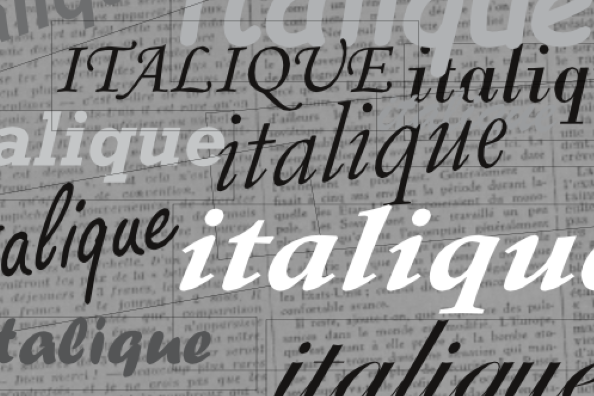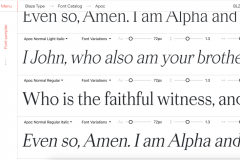In the history of typography lies an intriguing transformation: that of italics. Cursive script first appeared in the 14th century under the pen of Niccolo Niccoli, a Florentine scholar and famous bibliophile of the Italian Renaissance. It was used by chancellery scribes to write official correspondence.
Aldus Manutius, a 16th-century Venetian printer, adapted this script and, assisted by his engraver Francesco Griffo, created a bespoke typeface for a collection of Latin classics printed in small format. The first slanted typeface inspired by calligraphy was born.
Aldine letters, then Venetian letters and finally italic, from the 17th century onwards, this typeface found its place alongside the Roman typeface and began to acquire the function it has retained to this day: highlighting text elements.
In the 18th century, aldine italics gave way to modern italics with typefaces such as Baskerville and Didot.
The twentieth century saw the appearance, under the name of italic, of a slanted roman with sans serif typefaces such as Helvetica or Univers. Italic, which had a special spelling and was a font in its own right, also became a typeface.
The proper use of italics
In literature, it's used to draw attention to a word or a sentence, and replaces underlining. This change of typography slows down reading and highlights what is italicized.
In publishing and the press, this typographic variant is not to be handled lightly, and it's best to have your typeface code handy to avoid making any mistakes.
The names of works in general, magazines, newspapers, television programs and plays are italicized, but not those of sacred books.
You must write Titanic, which is the ship's proper name, but Renault, which is a brand name, remains in Roman.
Foreign-language texts, slang and regionalisms are italicized, but not Frenchized foreign words. We write Black Friday while the dolce vita remains in Roman! Visit sic, bis or even ter are the exception.
Musical notes, common names in the middle of several surnames, quotations, prefaces not written by the author, dedications, etc. are all italicized.
This long list, far from exhaustive, shows that italics have not finished making us dot the i's and cross the t's i (here the i is an autonym and therefore italicized)!












